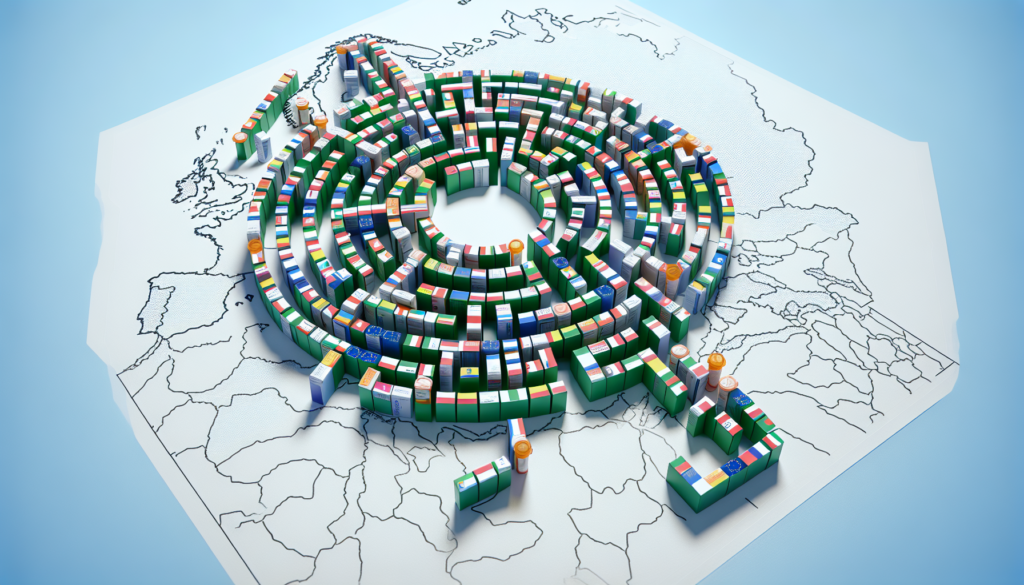“`html
Understanding Cross-Border Prescriptions in Europe
Navigating Europe’s prescription maze can be a daunting task for patients hoping to fulfill their medication needs across borders. This comprehensive guide breaks down the essential information and guidelines regarding cross-border prescriptions in Europe, ensuring that patients are well-informed and can navigate the process effectively.
The European Directive on Cross-Border Healthcare
The European Directive 2011/24/EU on patients’ rights in cross-border healthcare is a pivotal piece of legislation that plays a significant role in cross-border prescriptions. This directive allows EU citizens to receive medical care and fulfill prescriptions in other member states with greater ease. Understanding its provisions is crucial for anyone seeking medication abroad.
Objectives of the Directive
- Facilitate the mobility of patients within the EU
- Provide clarity on the reimbursement of cross-border healthcare costs
- Ensure the quality and safety of healthcare across the EU
How the Directive Impacts Patients
The Directive gives patients the right to access safe and high-quality healthcare within the EU. It also guarantees reimbursement for treatments received in another member state, provided the treatment is covered by their home country’s healthcare system.
Fulfilling a Prescription Across Borders
For those seeking to fill a prescription in a different European country, understanding the local regulations and processes is essential. The following covers the primary steps involved in fulfilling a cross-border prescription.
Requirements for a Valid Prescription
To be deemed valid across European countries, a prescription must include specific details. These include:
- Patient’s full name and date of birth
- Prescriber’s details, including professional qualifications
- Prescription date and appropriate medication details (name, dosage, and form)
- Instructions for using the medication
Where to Fulfill a Prescription
Each country may have specific pharmacies or systems in place for handling cross-border prescriptions. It’s important to contact pharmacies in advance to verify that they accept prescriptions from abroad. Also, digital prescriptions are becoming increasingly common, offering an alternative means to ensure your prescription can be filled while traveling.
Country-Specific Considerations
While the European Directive sets a framework for prescription fulfillment, specific rules can vary between countries. Below is a glimpse into how different healthcare systems across Europe manage cross-border prescriptions.
Germany
In Germany, pharmacies are generally well-equipped to handle European prescriptions, but it’s advisable to confirm that the prescribed medication is available. Germany’s healthcare system is structured to support cross-border healthcare, especially within the EU.
France
France requires prescriptions to be translated into French if they are presented in another language. Most pharmacies in France will accept an EU prescription, provided all the required information is present and legible.
Key Tips for Patients
When navigating Europe’s prescription maze, patients should consider these key pointers:
- Ensure all prescription details comply with the European Directive standards.
- Contact pharmacies in advance to check prescription acceptance.
- Consider language barriers and prepare necessary translations of medical prescriptions.
- Keep electronic copies of prescriptions where possible.
It’s also important to remember that this text is informational and does not replace medical advice. Always consult with a healthcare provider for specific inquiries related to cross-border prescriptions.
Summary
Navigating Europe’s prescription maze requires a comprehensive understanding of the European Directive on cross-border healthcare, as well as country-specific guidelines. Key considerations include ensuring prescriptions meet EU standards, contacting pharmacies in advance, and preparing for possible language barriers. By following these guidelines, patients can overcome the challenges of fulfilling cross-border prescriptions and ensure access to necessary medications when traveling across Europe.
“`

